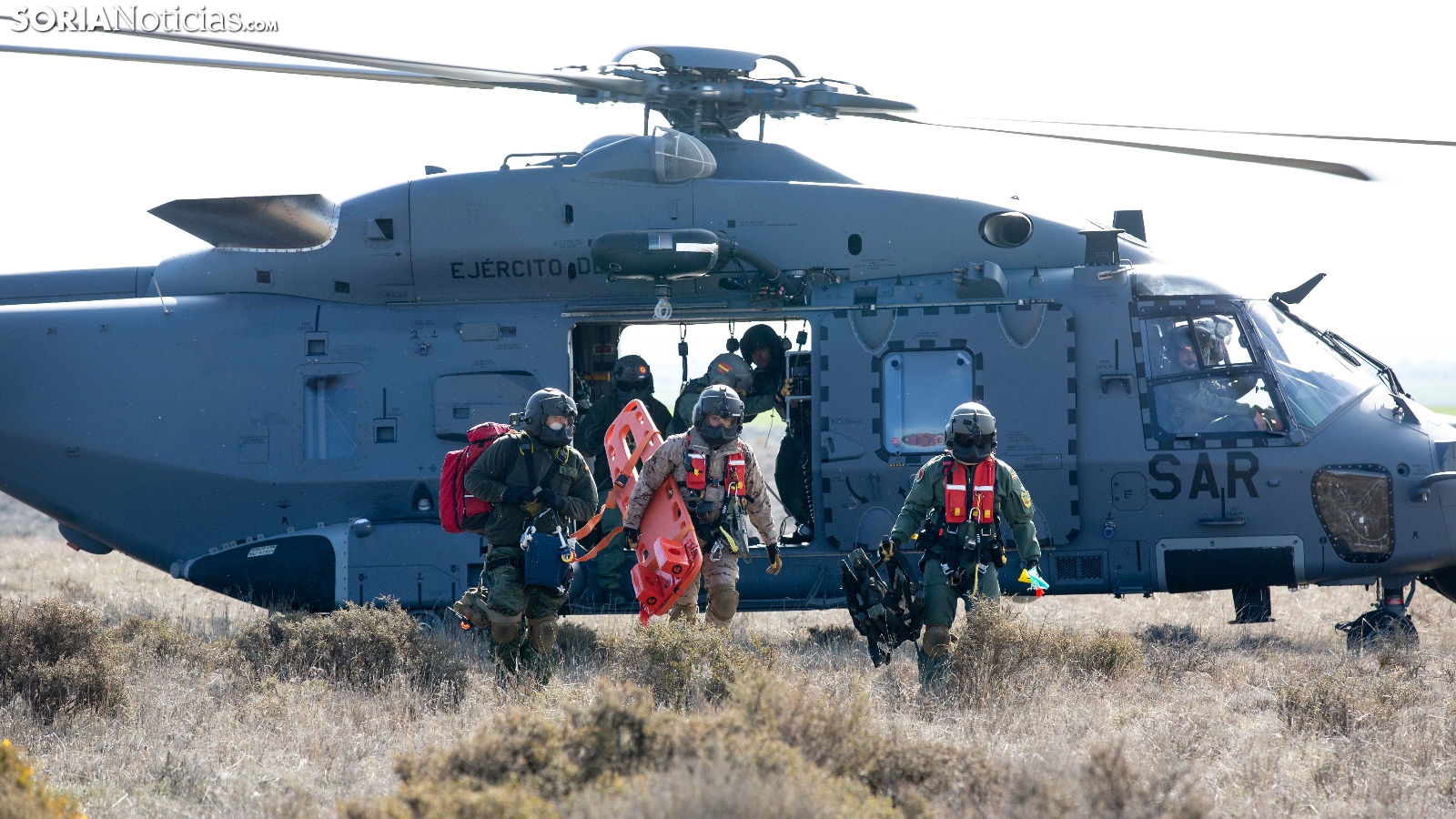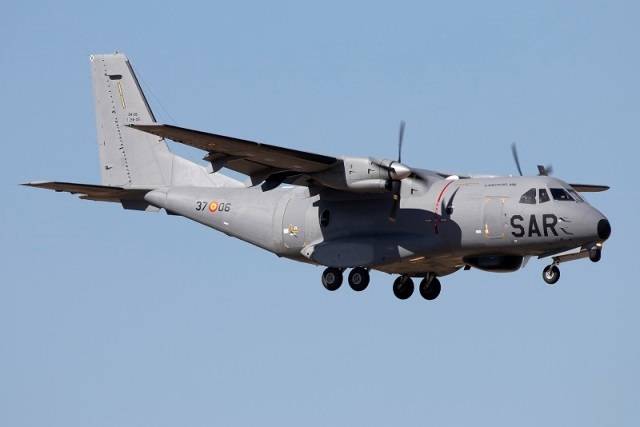
Interview with a member of the SAR 🚁🛟
On this occasion, we are going to interview a colleague from the SAR who has given us a super complete and interesting interview. Additionally, as always, this interview has been made possible thanks to our staff from our Discord channel. If you want to participate in future interviews, join our channel. clicking here.
We hope you like it:
1.- Before entering the SAR, were you in any other unit? If so, could you tell us which one?
No, this is my first destination. Also, it was my first choice when I applied to the Armed Forces. Although I had some interest in other units, I always knew that my path was directed and oriented towards the world of rescueI found out which units performed search and rescue functions within the Armed Forces, and the truth is that I was right about this unit. These types of units are among the most rewarding when it comes to learning and performing these tasks.
2.- For those who do not know, could you explain to us what SAR is and what it is dedicated to?
The units SAR (Search and Rescue) they are air search and rescue units. In the case of Wing 49, the main role is the execution of search and rescue missions and maritime surveillance (VIGMA) with two aircraft: the HD-21 Super Puma helicopter and the D-4 CASA CN235 plane, which are in permanent alarm 24 hours a day.
On the other hand, the SAR is responsible for acting in the event of any air, land, or maritime accident. Its mission is defined as follows: "Its mission is to locate crashed aircraft and try to provide assistance or rescue to any possible survivors as quickly as possible."
We also focus on conducting practices, exercises, and training for these activities (simulated searches at sea, raft launching, survival practices at sea, handling of radio beacons and equipment...) to be totally prepared for when any type of accident happens.

3.- How is it organized and in which part of Spain is it present?
The SAR units are distributed throughout the Spanish territory with their corresponding areas of responsibility (FIR). There are three squadrons trained to carry out the SAR mission as the main role:
- Squadron 801is located in Palma de Mallorca, Balearic Islands. Its responsibility is the FIR BARCELONA.
- Squadron 802is located in Las Palmas de Gran Canaria, Canary Islands. Its area of responsibility is the FIR CANARIAS.
- Squadron 803: located in Getafe, Madrid. It is responsible for FIR MADRID.
4.- Do you prefer daytime or nighttime operations?
For my taste, it is indifferent. Both are quite rewarding when performing. SAR functions or VIGMA operations, they have the same similarity when it comes to working and operationally. While it is true that when night operations are carried out, the operation becomes more difficult due to the lack of visibility, making it more arduous.
5.- What do you think of squadron 801?
The 801 squadron is a reference for me in the field of professionalism and dedication, with highly qualified and trained personnel to carry out SAR and VIGMA operations.
It has been active since 1954, with the creation of the 50th Rescue Squadron, being the first SAR to operate in Spain. It has carried out a total of 116,300 flight hours, with over 4,000 hours in real operations (rescues, escorts, evacuations, maritime surveillance missions, etc.). In addition, the unit is constantly developing its capabilities by participating in international and national exercises and collaborates with both civilian and military organizations as needed.
It is also worth highlighting its participation in international missions, such as the Peacekeeping Operations (PKO): Operation Atalanta (Fight against piracy and illegal trafficking of people), Operation Sophia, Operation ISAF, etc.
Throughout its history, the 801 Squadron of the Armed Forces. has operated six types of aircraft, three airplanes and three helicopters; among the first we find the SA/HU-16 Grumman (1954-1978), CASA C-127 (1963-1974) and CASA C-212 Aviocar (since 1979); among the helicopters, the AUGUSTA-BELL 205 (1967-1983), AS-332 Super Puma (1983-1994) and SA-33 Grumman.
6.- What is required to be a helicopter crane mechanic/operator?
To become a flight mechanic/crane operator, one would need to access via a scale of Non-commissioned officers in the Mechanical Maintenance specialty. Once the training is completed, it will be necessary to observe if any of the job openings for helicopter aircrew appear in Wing 49 - Mallorca, Wing 48 - Madrid, or Wing 46 - Canary Islands, which correspond to squadrons 801, 803, and 802 respectively.

7.- What requirements are needed to be crew on the CN-235?
A position as a crew member on the CN-235 can be obtained from the ranks of Troops and Sailors, Non-Commissioned Officers, or Officers, depending on the position held. This type of position requires extensive knowledge regarding the operation of the aircraft's mission equipment and systems for the case of the operator position, as well as specific training for the observer position.
To apply for the published vacancies of air crew member, in the case of operator and spotter, an instruction and evaluation plan must be completed in the unit. A failure may result in loss of assignment. The operator will focus on the study and handling of the manual of the different mission systems of the aircraft, while the spotter will emphasize the proper handling of the various cameras and proficiency in procedures such as launching rafts or flares.

8.- What do you need to do to become a rescuer?
You can apply for a rescuer position from the ranks of Troops and Navy, Non-Commissioned Officers, or Officers. While it is true that this position requires a high level of psycho-physical preparation, as it is made clear with the demand of its physical tests.
To access directly from the Troop and Navy scale, it will be necessary to check in the Official State Bulletin (BOE) that the offered position is for one of the SAR squadrons and that the qualifications of diver/swimmer are required in the observations.
Once the position is assigned, an instruction plan will be passed in the exclusive unit, which may lead to the loss of the assignment.
9.- What is the worst thing you have seen in a rescue?
In March 2022, a national maritime surveillance operation was carried out with our D-4 VIGMA. Just an hour before it started to dusk in the Cádiz area the operator detected a possible small radar contact with a somewhat strange and variable course. We decided to remain in the area to analyze the situation and, performing a sweep with the FLIR in infrared mode.
After several sweeps, we realized that it was a small vessel no longer than 8 meters of length with one person on board in a state of desperation (Waving a reflective vest and moving both arms energetically). It was then that we identified the contact as a drifting vessel in a situation with lives in danger, thus beginning the corresponding procedure to ensure the physical safety of that person.
Despite having good buoyancy and a life jacket, the vessel did not have a radio on board to establish communication with any means. Contact was established with maritime rescue Almeria, which was launched immediately before there was less visibility as night fell, and the rescue was successfully carried out. The person who was adrift turned out to be a fisherman who strayed from the route fishing when a engine failure occurred. In the end, it was just a scare and he returned home safe and sound.
In addition, when conducting maritime surveillance operations at the national or NATO level, we detect multiple migration contacts occurring in our waters of responsibility, situations that are not always pleasant.

10.- Did you ever feel during a rescue that it was better to leave?
Never. As long as fuel and resources allow, we stay in the area until the last moment. Otherwise, it would be fleeing from our work and our obligation as professionals and military personnel.
11.- How is your preparation?
Daily we carry out training of all types of searches, whether at sea or on land (different search patterns at different heights and textures, vessel recognition, coastal reconnaissance, and search in this...)
Also in the helicopter, the rescuers are constantly conducting drills in order to be prepared and qualified to activate in any event.
12.- What is a normal day like at your job?
Our daily work is mainly dedicated to the preparation of the mission on land. Depending on the department to which it is assigned, work will be carried out in areas as diverse as aircraft operations management (Flight hours, crew training, exercise coordination...), cartography, flight safety, equipment maintenance, mission support centers...
The work in flight consists of carrying out exercises, missions, and SAR and maritime surveillance drills, always keeping the crews prepared.
13.- What advice or recommendation would you give to someone who wants to enter the SAR?
I would recommend that you acquire a good knowledge and information about what SAR is and its units: how they work, what their purpose is, and their operability. Similarly, and although the training of the crews is carried out entirely within the unit, it would be advisable, if the opportunity arises, to take a course related to the sector, whether it be maritime safety training, rescue boats (fast and non-fast), survival craft, helicopter rescue swimmer, or diver among others.
We read you in the comments.
New Arrivals
Carbide Glass Breaker Tip Accessory for Multitools - Leatherman
This carbide glass breaker accessory for multi-tools from the American brand Leatherman allows us to replace or add a fully functional tungsten car...
View full detailsSkeletool® KB Knife - Leatherman
The Skeletool KB knife from the American brand Leatherman is an ultralight, high-performance pocket knife designed for everyday use, EDC, and outdo...
View full detailsRaider ATS Women's Combat Shirt - Clawgear
The Clawgear Raider Combat Shirt ATS Female Fit has been specifically designed for the female anatomy, incorporating an ergonomic fit, strategical...
View full detailsRaider ATS Women's Combat Pants - Clawgear
The pants Raider ATS Female Fit from the Austrian brand Clawgear is a high-performance combat pant specifically designed for the female anatomy. It...
View full detailsMolle front panel front flap - M-TAC
The M-TAC molle front flap panel from the Ukrainian brand M-TAC is a lightweight yet robust accessory designed to be placed on the front of your pl...
View full details









Comments
Leave a comment